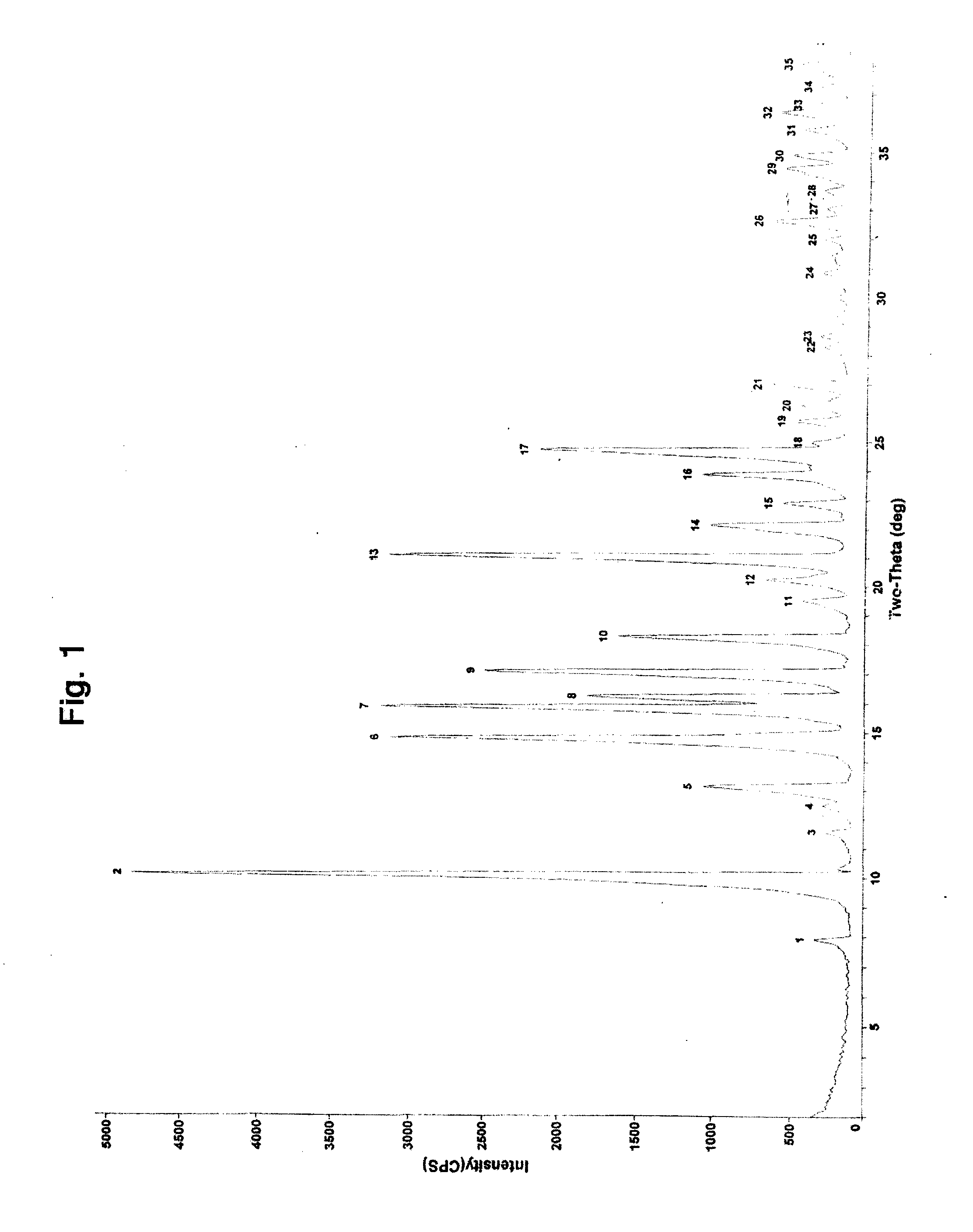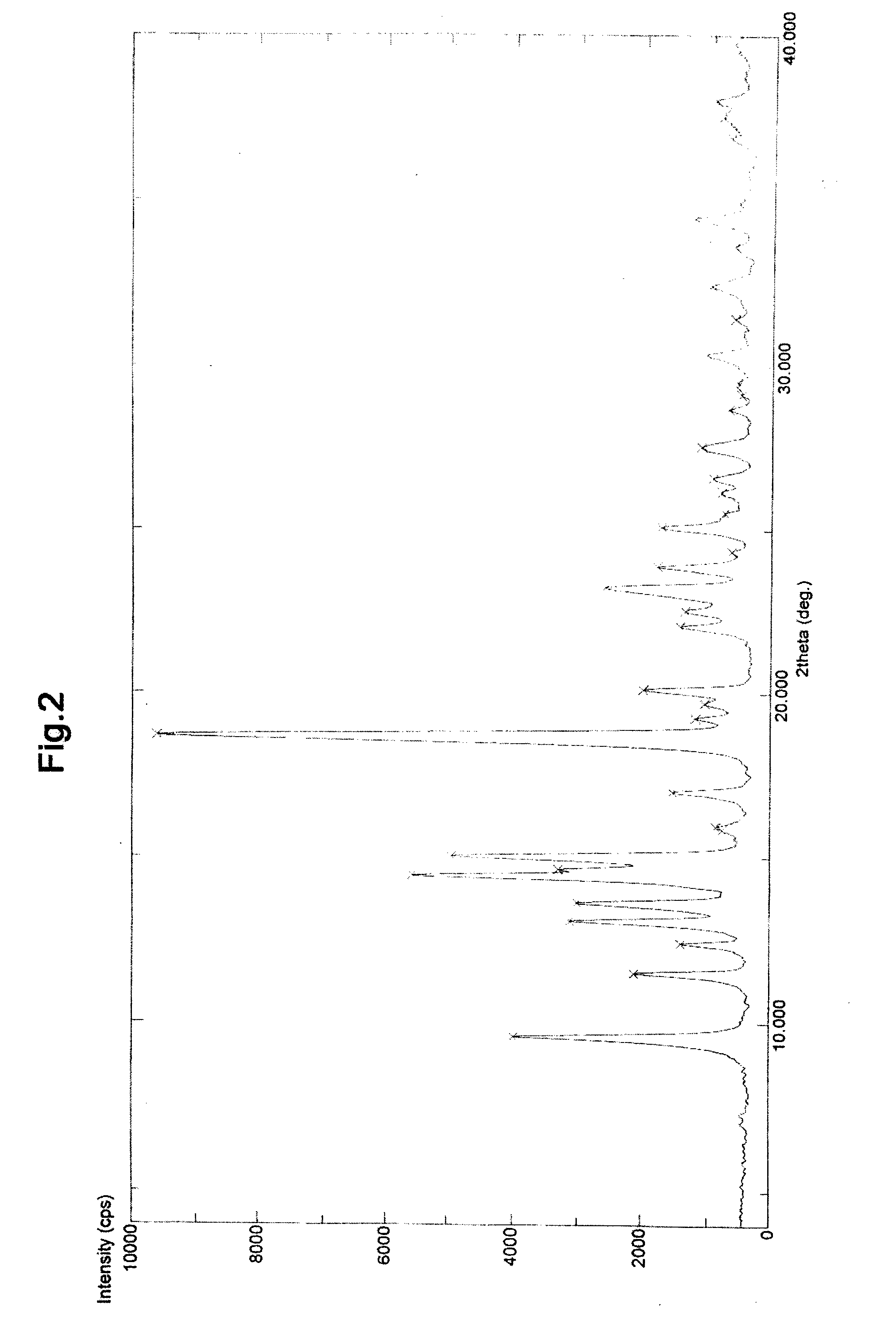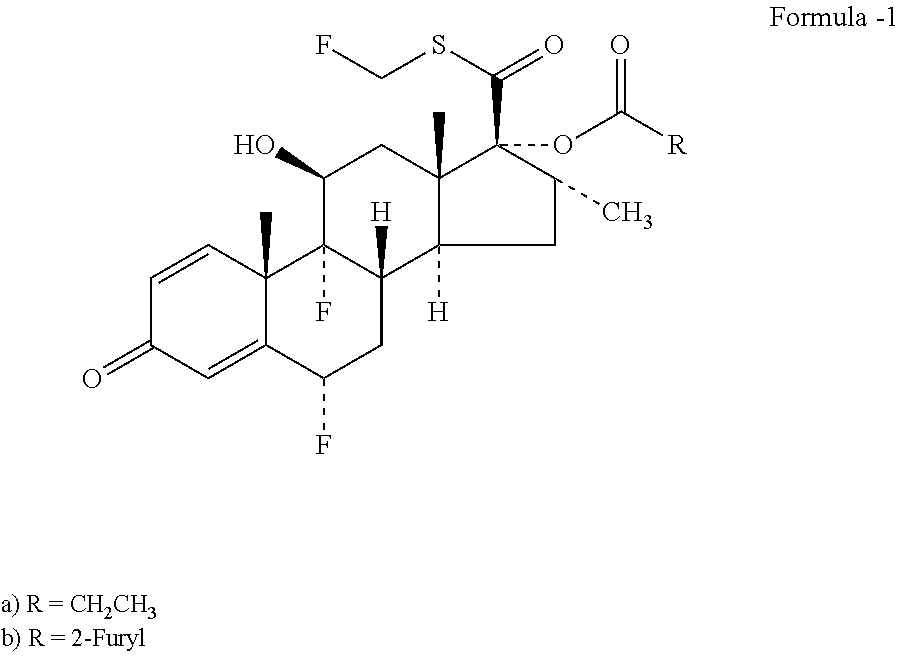Process for preparing fluticasone propionate/furoate
a technology of fluticasone propionate and furoate, which is applied in the direction of steroids, organic chemistry, etc., can solve the problems of poor yield obtained with secondary amines such as diethylamine, poor yield of sodium hydrosulfide, and long preparation process. , to achieve the effect of improving the quality of product, reducing the possibility of impurities, and convenient economics
- Summary
- Abstract
- Description
- Claims
- Application Information
AI Technical Summary
Benefits of technology
Problems solved by technology
Method used
Image
Examples
example 1
6α,9α[-Difluoro-11β,17α-dihydroxy-16α-methyl-3-oxoandrosta-1,4-diene-17β-carboxylic acid
[0048]A solution of sodium metaperiodate (78 g) in water (312 mL) was prepared by at 50-55° C. and then cool down to ambient temperature. This solution was added drop wise to a stirred suspension of flumethasone (100 g) in tetrahydrofuran (500 mL) at room temperature. After the addition was completed the mixture was stirred for further 2 hrs at 25-30° C. and thereafter quenched by addition of water. The precipitated solid mass was filtered and further washed with water (1 L) and dried at 70-75° C. Yield: 92.0 g (95.83%), HPLC Purity: 99%.
example 2
6α,9α-Difluoro-11β-hydroxy-16α-methyl-17α-propionyloxy-3-oxoandrosta-1,4-diene-17β-carboxylic acid
[0049]A suspension of 6α,9α-difluoro-11β,17α-dihydroxy-16α-methyl-3-oxoandrosta-1,4-diene-17β-carboxylic acid (100 g) and triethyl amine (58.6 g) in acetone (500 mL) was cooled to 0-5° C., Another solution of propionyl chloride (49 g) in acetone (100 mL) was added to it drop wise in 1 hr and the reaction mixture was further stirred for 2 hr at 0-5° C. The reaction mixture was warmed up to 40-45° C. and diethyl amine (38 g) was added drop wise within 30 minutes. The reaction mixture was further stirred for 2 hr at 40-45° C., then cool down to 20-25° C. To the reaction mixture water was added slowly for 30 minutes and the reaction mixture was acidified to pH 1.5-2 by the addition of Conc. HCl and further stirred for 45 min. The precipitated solid product is filtered, washed with water, and dried at 70-75° C. Yield: 110 g (96.5%), HPLC Purity: 99%.
example 3
6α,9α-Difluoro-11β-hydroxy-16α-methyl-17α-propionyloxy-3-oxoandrosta-1,4-diene-17β-carboxylic acid
[0050]A suspension of 6α,9α-difluoro-11β,17α-dihydroxy-16α-methyl-3-oxoandrosta-1,4-diene-17β-carboxylic acid (100 g) and diethanol amine (58.6 g) in acetone (500 mL) was cooled to 0-5° C., Another solution of propionyl chloride (49 g) in acetone (100 mL) was added to it drop wise in 1 hr and the reaction mixture was further stirred for 2 hr at 0-5° C. The reaction mixture was warmed up to 40-45° C. and diethyl amine (38 g) was added drop wise within 30 minutes. The reaction mixture was further stirred for 2 hr at 40-45° C., then cool down to 20-25° C. To the reaction mixture water was added slowly for 30 minutes and the reaction mixture was acidified to pH 1.5-2 by the addition of Conc. HCl and further stirred for 45 min. The precipitated solid product is filtered, washed with water, and dried at 70-75° C. Yield: 100 g (96.5%), HPLC Purity: 94%.
PUM
 Login to View More
Login to View More Abstract
Description
Claims
Application Information
 Login to View More
Login to View More - R&D
- Intellectual Property
- Life Sciences
- Materials
- Tech Scout
- Unparalleled Data Quality
- Higher Quality Content
- 60% Fewer Hallucinations
Browse by: Latest US Patents, China's latest patents, Technical Efficacy Thesaurus, Application Domain, Technology Topic, Popular Technical Reports.
© 2025 PatSnap. All rights reserved.Legal|Privacy policy|Modern Slavery Act Transparency Statement|Sitemap|About US| Contact US: help@patsnap.com



